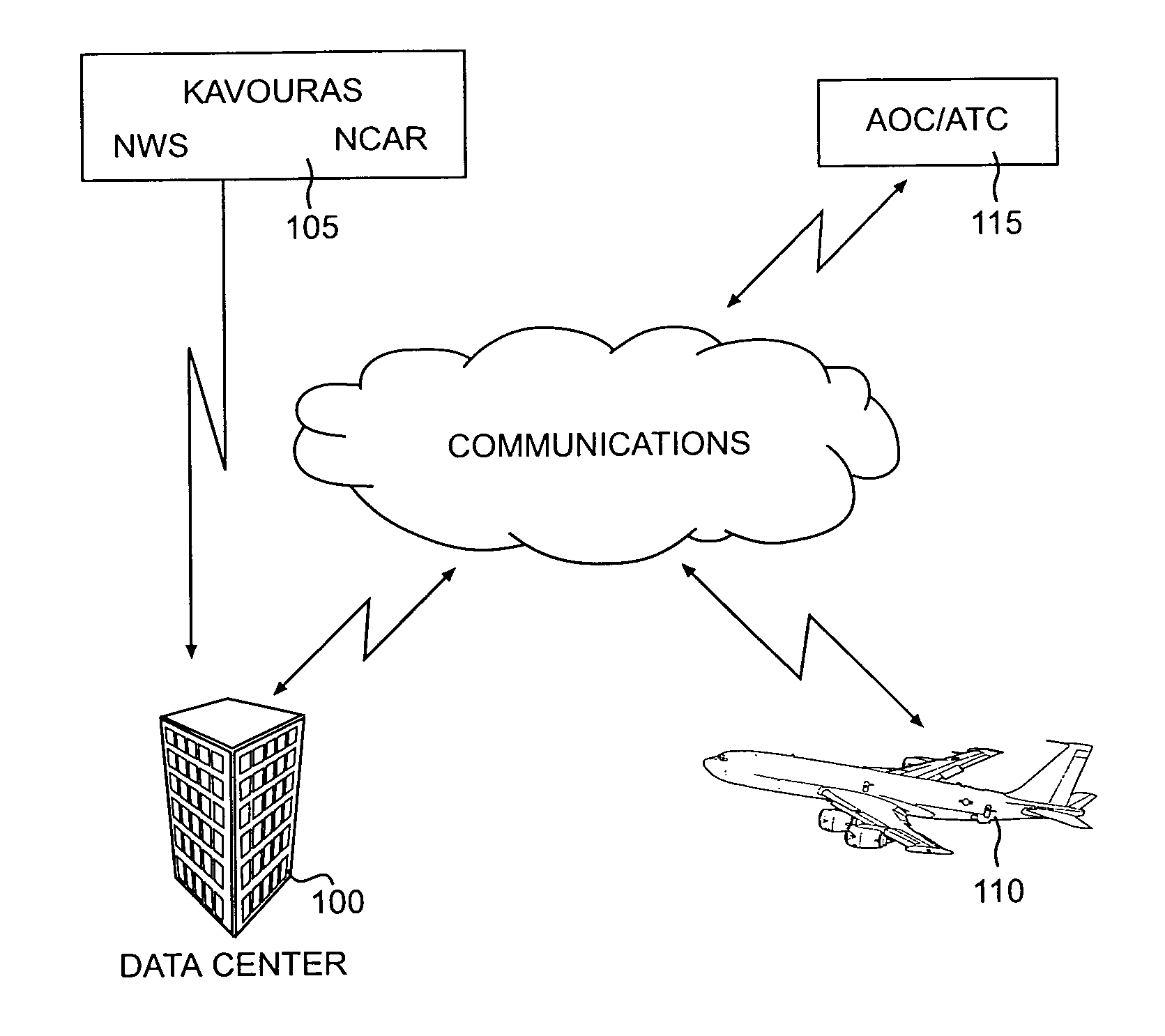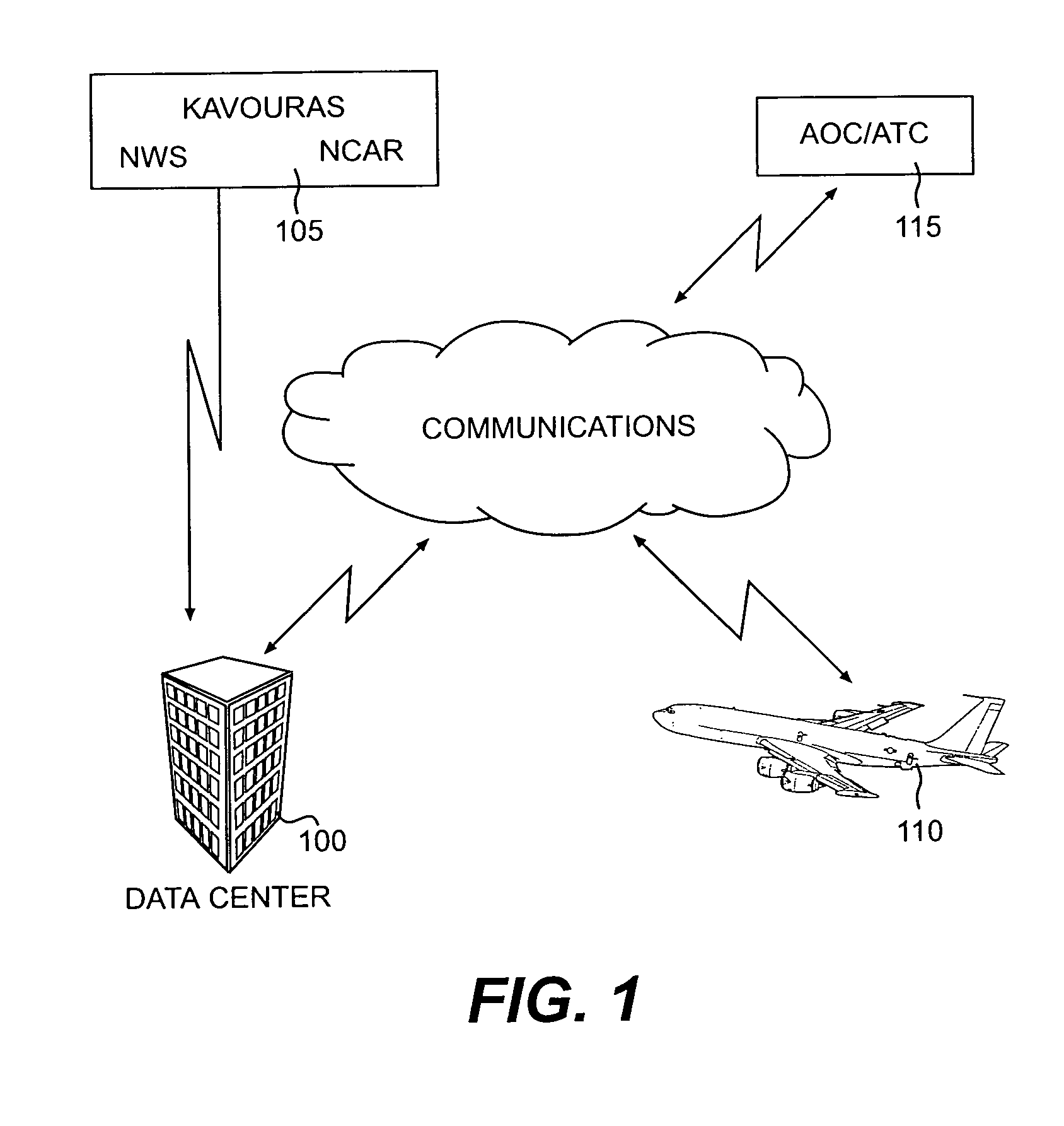Weather information network including graphical display
a weather information network and weather information technology, applied in the field of weather information networks, can solve the problems of limited use of radar systems, inability to penetrate clouds and detect weather conditions on the other side, and inability to provide weather within a few hundred mile radius of aircraft, so as to enhance pilot situational awareness, improve flight economy and safety, and improve the effect of informed and intelligent decisions
- Summary
- Abstract
- Description
- Claims
- Application Information
AI Technical Summary
Benefits of technology
Problems solved by technology
Method used
Image
Examples
Embodiment Construction
[0061]The present invention is directed to an entire weather information network, including the collection and processing of weather information at a data center, the communication of that information to an aircraft, and the display of such information to a user onboard the aircraft.
1. The Data Center
[0062]As depicted in FIG. 1, the data center 100 collects weather information from a variety of weather sources 105. The weather information then is compiled, packaged, and queued for further transmission to an aircraft 10 via one of several possible communication routes, such as shown in FIGS. 2–6.
[0063]The weather sources 105 may include commercial providers such as, for example, Kavouras, the National Center for Atmospheric Research (NCAR), the National Weather Service (NWS), Weather Service Information (WSI), and the like. Weather information may also come from other sources, such as the Federal Aviation Administration (FAA), Airline Operations Communication (AOC), or even aircrafts...
PUM
 Login to View More
Login to View More Abstract
Description
Claims
Application Information
 Login to View More
Login to View More - R&D
- Intellectual Property
- Life Sciences
- Materials
- Tech Scout
- Unparalleled Data Quality
- Higher Quality Content
- 60% Fewer Hallucinations
Browse by: Latest US Patents, China's latest patents, Technical Efficacy Thesaurus, Application Domain, Technology Topic, Popular Technical Reports.
© 2025 PatSnap. All rights reserved.Legal|Privacy policy|Modern Slavery Act Transparency Statement|Sitemap|About US| Contact US: help@patsnap.com



